It is about ten years from the initial contact with design up to now. Before that, I have always been roaming in the uninterrupted and lengthy process of learning painting. Therefore I have encountered the writings of Mr. Zhu Guangqian, a famous Chinese aesthetician, in earlier years. There is a description of beauty in his work that “Beauty not only related to object, and not only related to the soul, it is the relationship between both of them”, which means that the “soul” reflects the beauty by the image of “object”. The natural beauty can’t be found everywhere in the world but be created by the soul. Such ideas have a far-reaching influence on my exploration of the design afterwards.
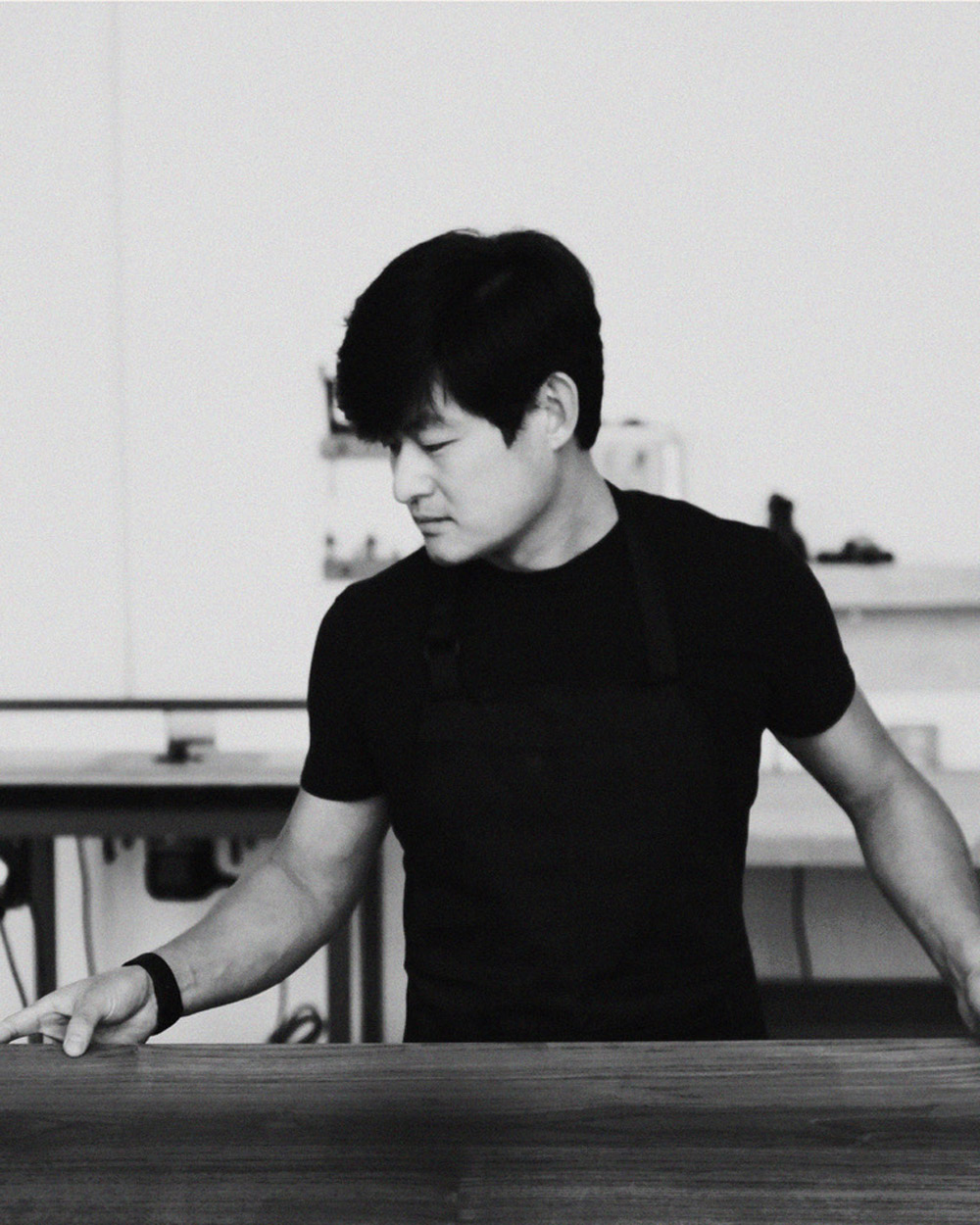
For me, the design is inspired by the little things in life. When studying in America, I have developed a habit of recording the most touching thing in written every day. Sometimes only walking at the lakeside, I look at my own projection on the calm surface of the lake. When breeze blows, there are ripples appeared on the sparkling lake, and the reflection also thickens, which gets me excited a lot. When we stay calm to feel everything around us, it seems that the quite familiar scenes are strange again, as if the curiosity is ignited once more. I think that the mirror we use every day is too familiar, and the quiet lake water is just the most primitive status of mirror. When the lake surface isn’t flat any more, can you also forget the vague reflection temporarily like me and be lost in the imagination of sweet memory at the charming ripples?
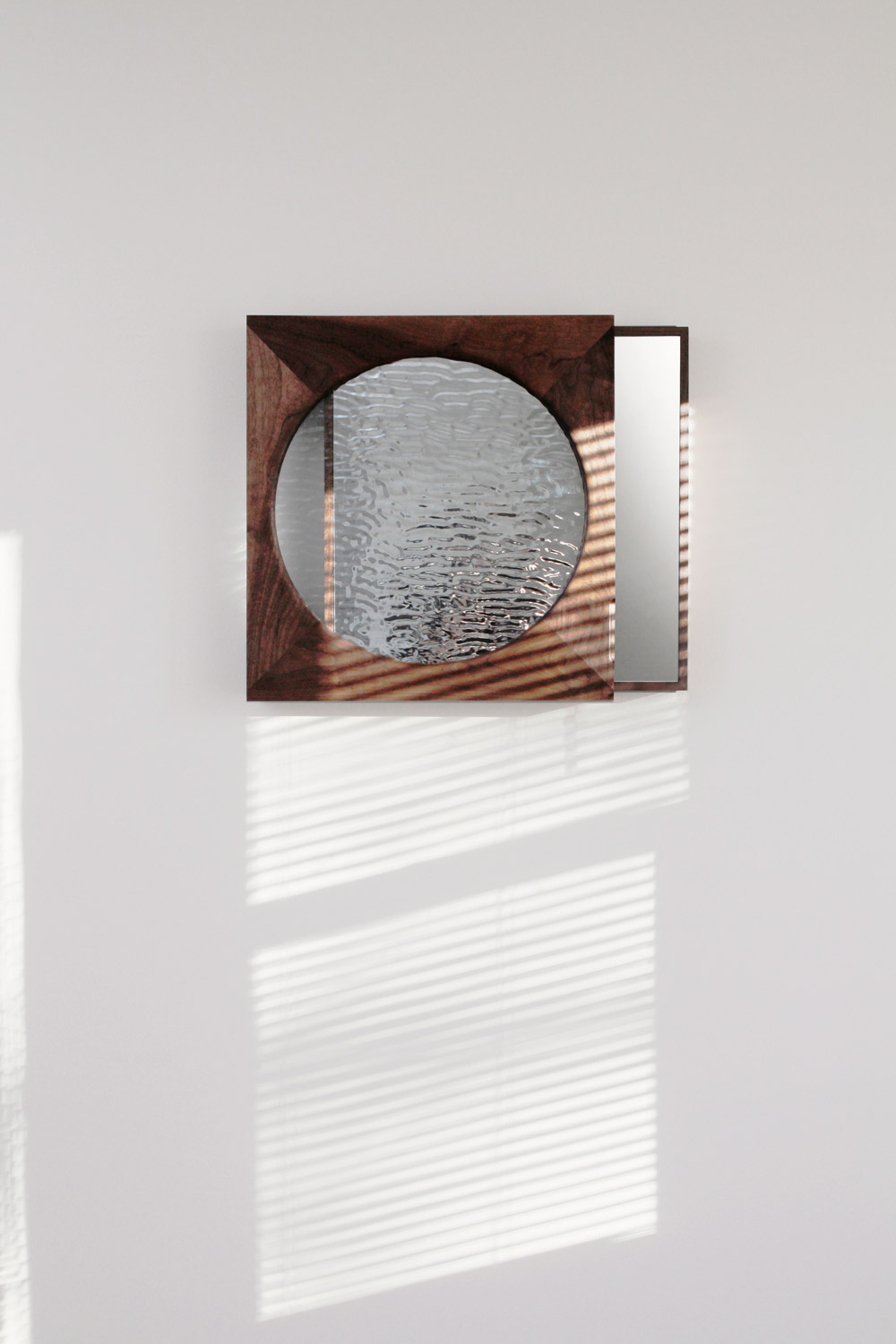
The inspiration of Water Mirror is from the records in such cases. The dynamic and still status of water is just like the beauty described by Mr. Zhu Guangqian, which is a good combination of the soul and object. Thereby I have designed the Water Mirror of two-layer structure. One layer is the most common mirror, the other adopts the transparent hammer glass, both combined in a “sliding door” manner. When both materials overlap, the transparent hammer glass seems like a caky ripple. When the sunshine sprays on the mirror, it looks like a sparkling lake, making you immersive. After you slowly push the first glass, the mirror face gradually appear, and the mirror is also imagined as the smooth surface of the lake by you due to the ripples.
I hope my designs are separated from the grandstanding ornaments, and the products can communicate with the users in the designed way with a bidirectional relationship established under the precondition of meeting the function needs to the utmost. The form follows the function which shall bear certain poetic expressions, in order to make the products have richer and more pleasant functions. When we use some product, we will touch and paly it, and I hope you could understand, appreciate and even talk with it in my design.
-
The purpose of design thinking for the Spoon Chair is to focus on the exploration of the possibility to combine the modern production technology and the traditional handmaking woodcraft.
The overall design language is created from the point of function, and in the premise of “form follows the function”, the product design removes all unnecessary elements. This chair has only three legs to support it, the overall weight is reduced, while by applying CNC carving technology to make its perfect tenon-mortise joints, the whole structure and the durability of the chair are enhanced.
The back and the seat surface of this solid wood chair adopt the organic form of curves which can better support the user's body to provide optimum sitting comfort to users. At the joint of the chair leg and chair back, the design mimics the natural growth of trees, applying natural curves to generate a hanging hook for users to hang their scarfs, coats and handbags conveniently without sacrificing the comfortness of the chair.
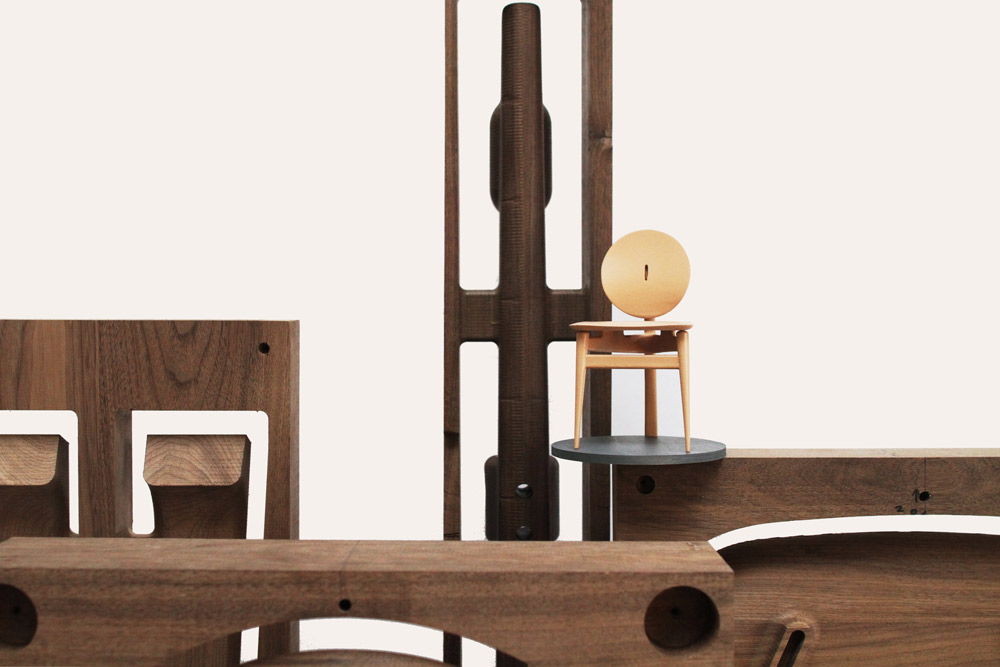
The most unique feature of this chair is reflected in the fluidic sculpture like transitional connections of all parts, in the structure that of both reliability and aesthetic feeling, and in the beauty of those soft curves of the edge.
-
“Lotus, the Virtue Lady in followers. Hollow as inside is, upright is the outside, With no creeper and branch served. Wafting its fragrance far and wide, It stands elegant and spotless, Only far in the distance to be observed, Yet not by close playing to be profaned.” These are the well-knows lines from poem “Ode to Louts” written by Zhou Dunyi, the great master of literature in Song Dynasty. Beside the descriptions of the shape and beauty of Lotus, he also wrote the following lines to conclude the virtue and spirit of Lotus - “And yet, on the lotus my crave showers, Which out of muck and mud grows unblemished, And out of clear waters shows pure and stainless.” His words are as beautiful as Lotus, shows the love for the elegance of the flower itself and the virtue of it as well.
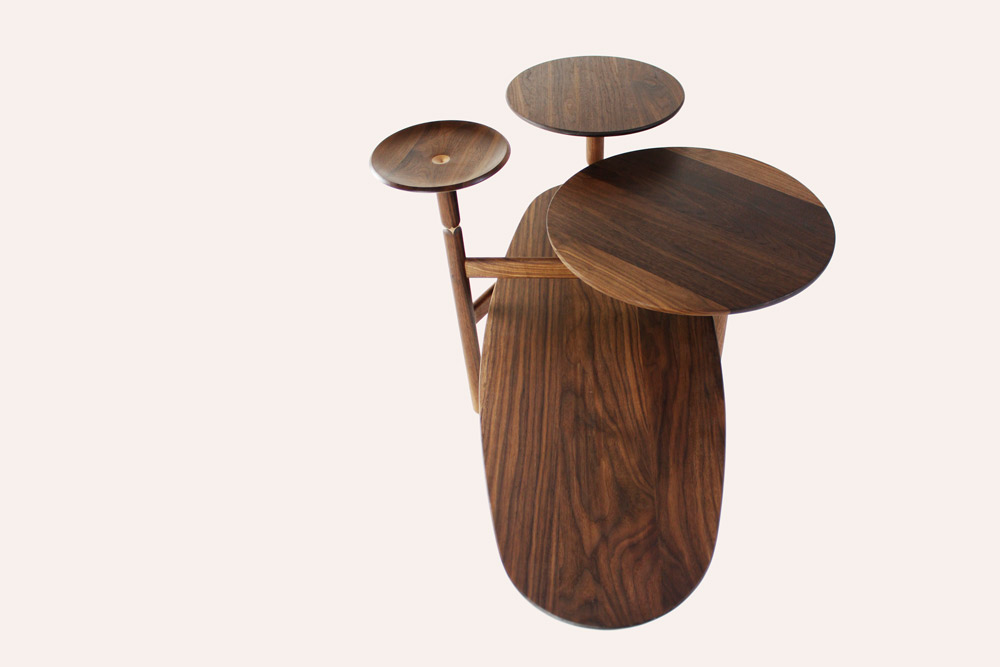
I have this profound feeling for lotus for quite a long time, the most fascinating scene of lotus in my mind is a pond all covered with the leaves of lotus, and among which, there highly and elegantly out-stands the lotus buds and bloomed flowers. They are waving gently, with crystal rain drops on their leaves. Every piece of lotus leave is a bowl containing the pearls. While underwater, it’s a completely different world. The branches are attached to their roots, and grow deep into the mud, and all the branches tangled into each other. These two very different scene is divided by the water surface, so departed in the vision while still connected to each other.
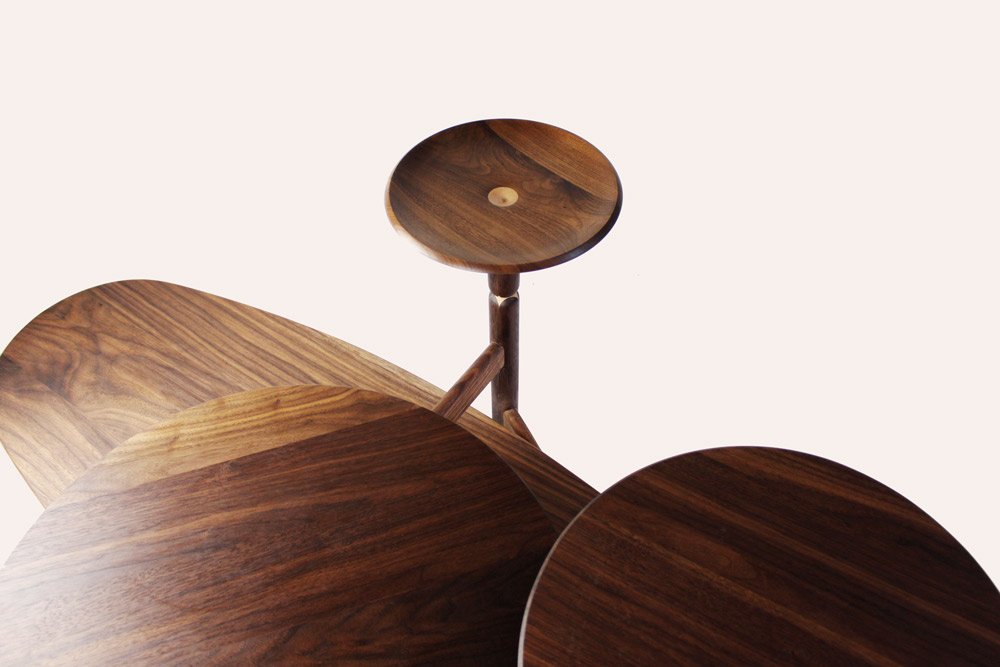
The feelings urges me to create something as beauty as they demonstrated to me. Lotus side table is inspired then. I use hard maple and walnut as the material for the table, applying their color to represent the flower and root of lotus. Through the strong contrast of color, I want to show the purity of the flower. The hardness of hard maple can enhance the overall structure of the table. The main body of the side table is made of there round table tops in different sizes, and composed in different heights. The design is not only focused on external shape but also fits for different usage occasions. These three table tops are organically connected to each other. The bottom table top is the largest to represent the water surface, thus divide the design into two parts – the up world and the under world.
Photo and original text: Lu Xu

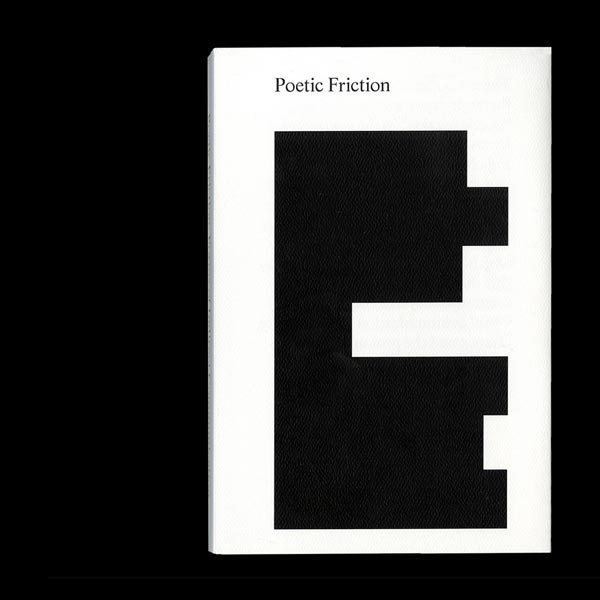
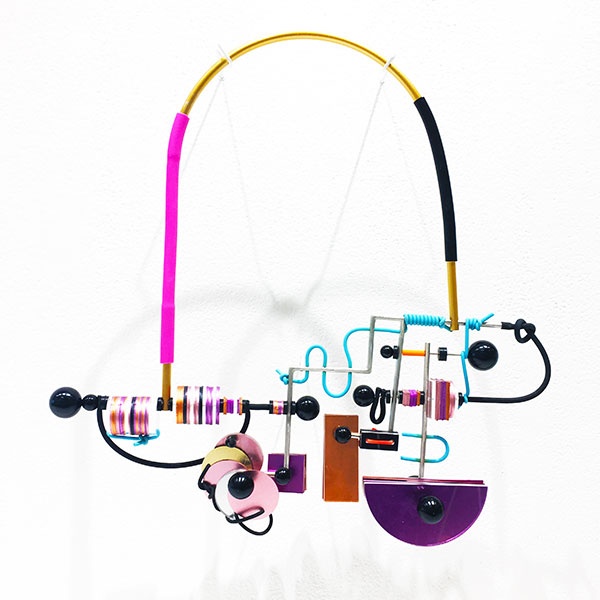
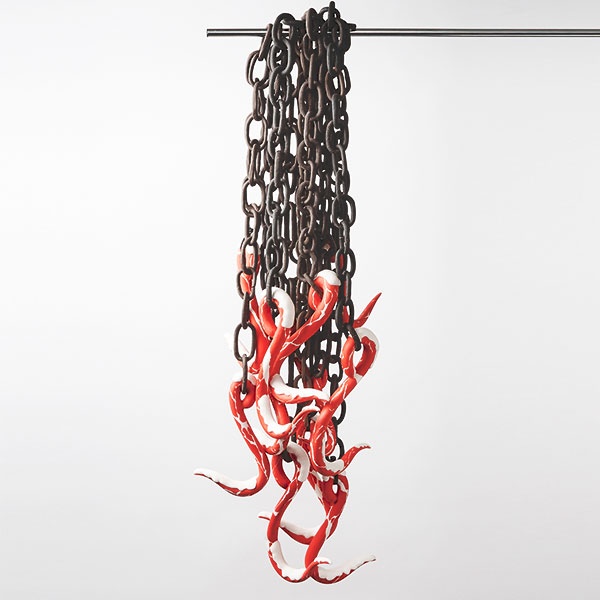
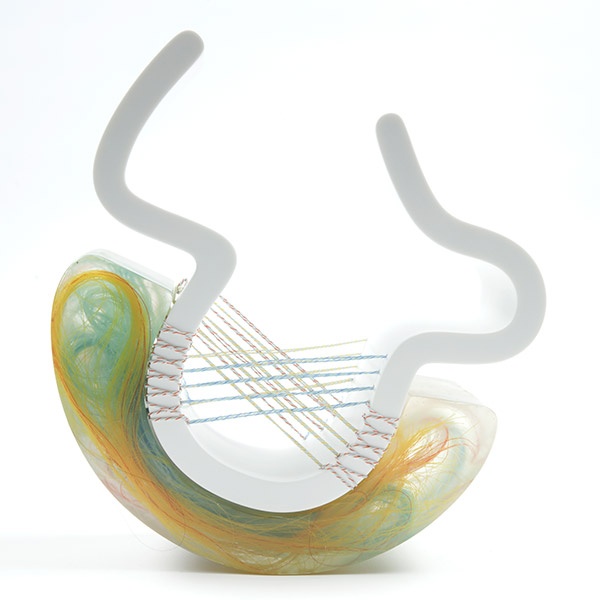
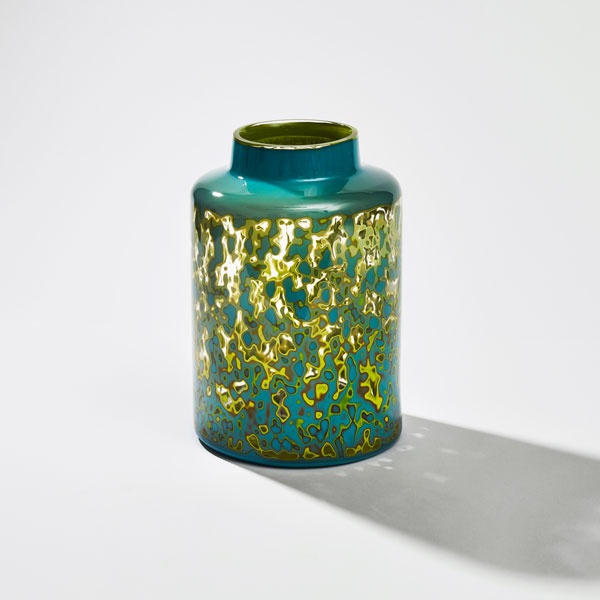
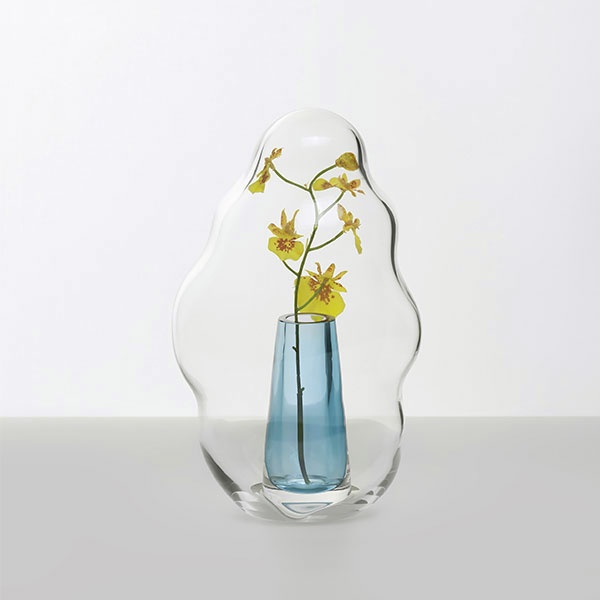
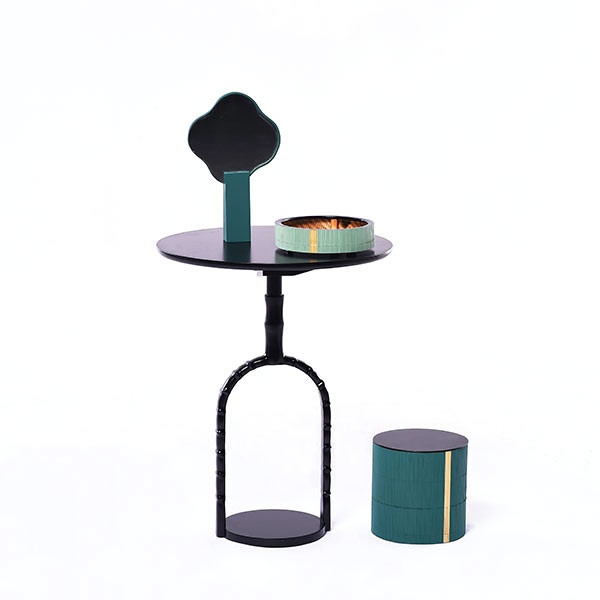
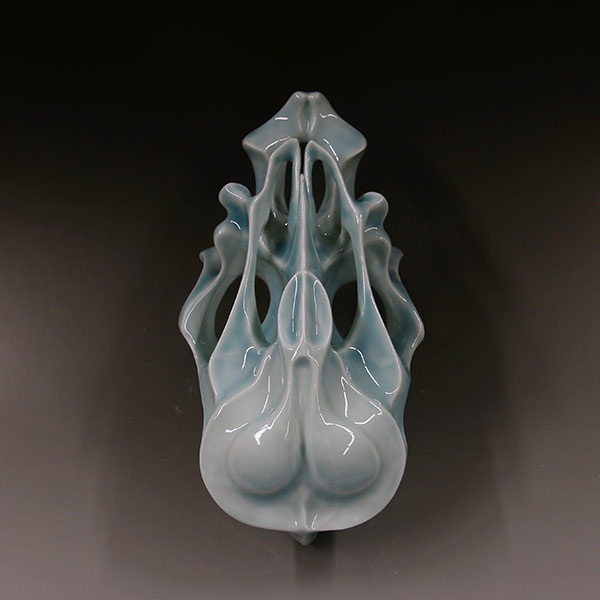

1 / 31
show thumbnailsnext picture previous picture start slideshow close lightbox